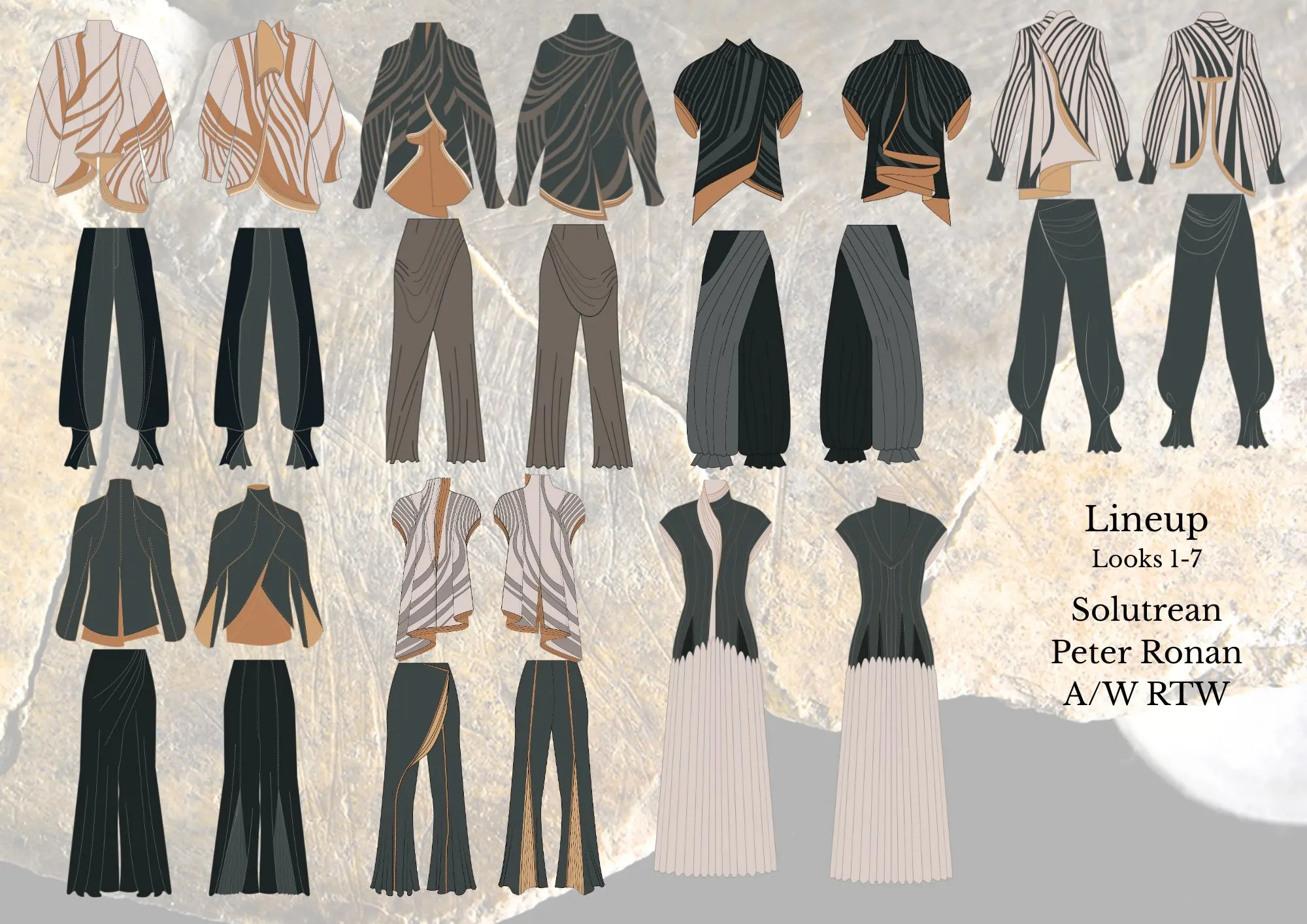-

- Peter Ronan
Peter
Ronan
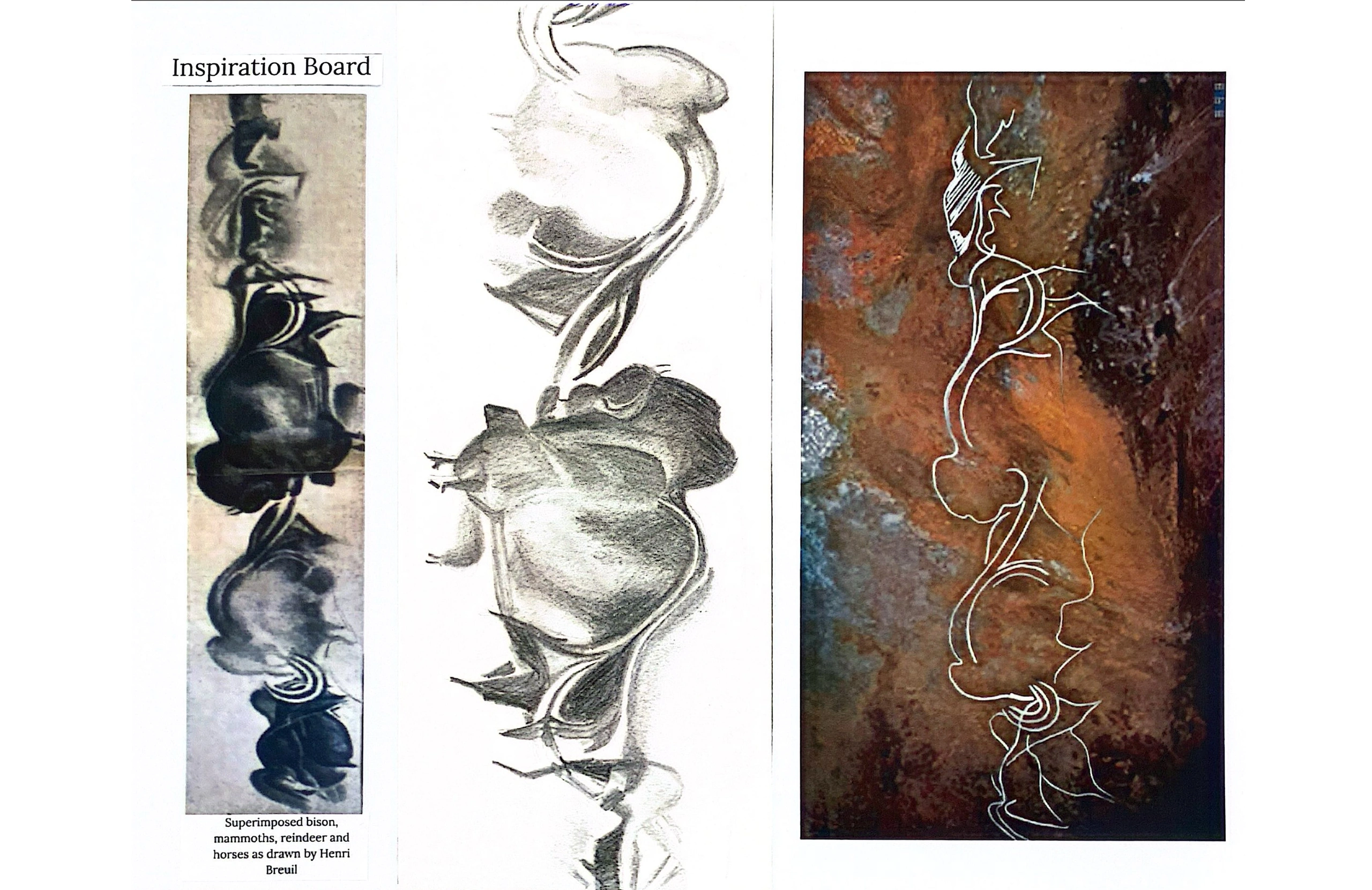
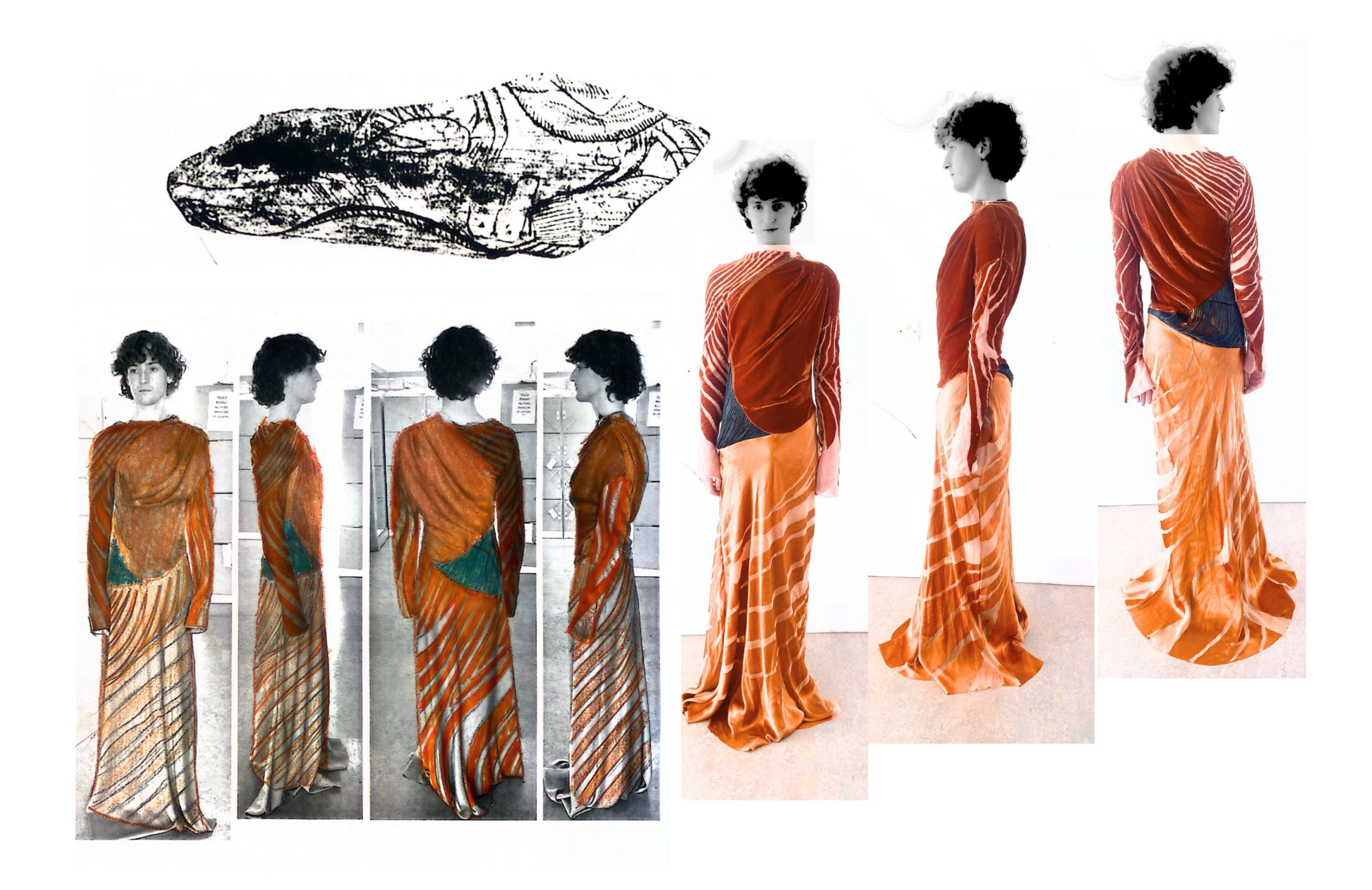
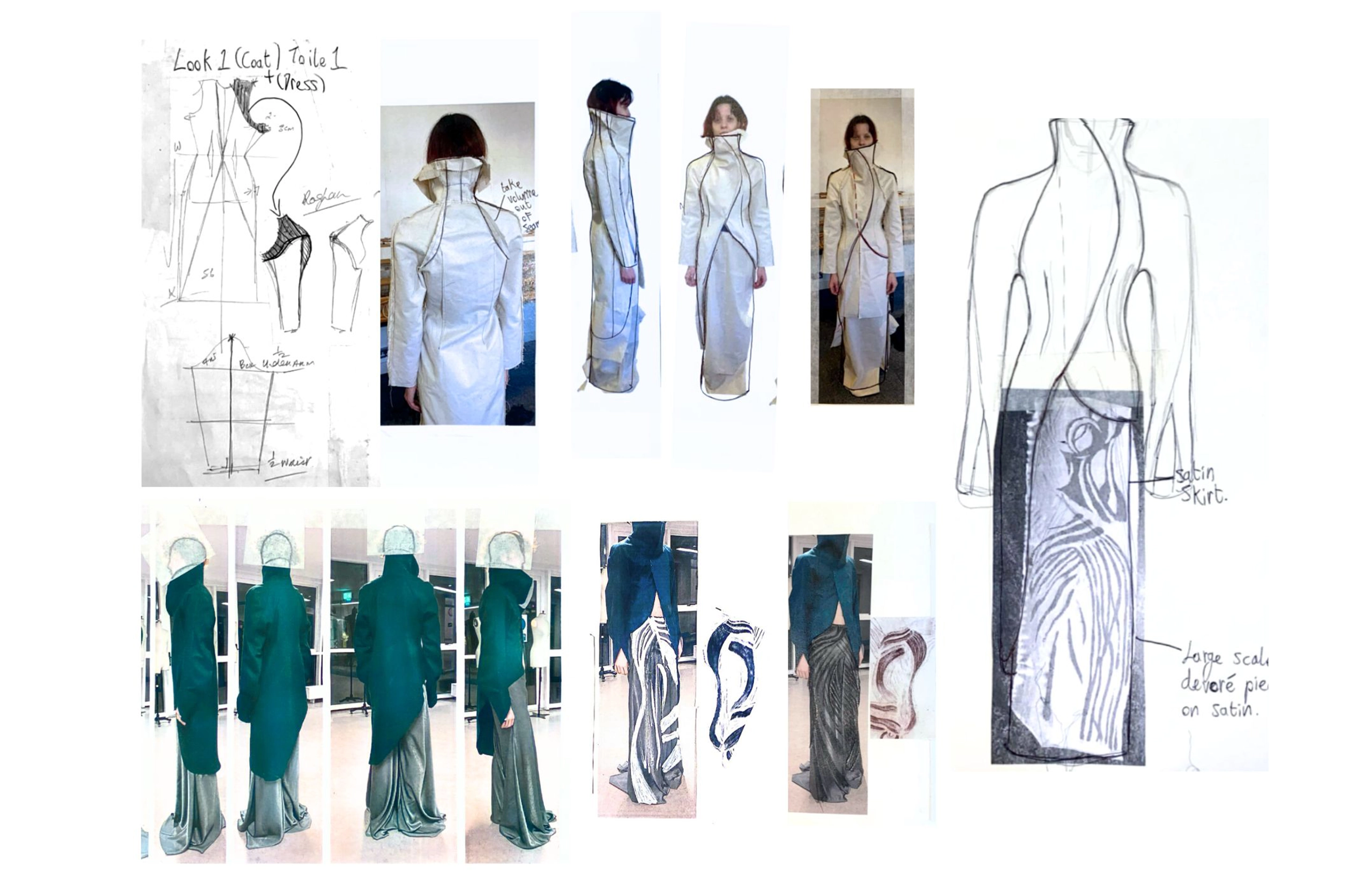

Magdalenian A/W
For my graduate collection, I have designed a collection of 6 womenswear looks, 3 of which I have manufactured. My inspiration is drawn from palaeolithic cave art, particularly that found in the caves of France and Spain. The artwork in these caves is renowned for its visual complexity. It is considered one of the earliest forms of human creativity. The collection title is derived from the name given to the time period when these drawings were made between 23,000 and 14,000 years ago. The Magdalenian era is known as the last cultural era of Ice Age Europe.
My goals in relation to this collection involved challenging my construction process through complex and experimental pattern cutting. I discovered new methods of sewing as a result of the challenging fabrics I chose such as velvet and chiffon. I wanted to honour the continuous swirling mark making found in these caves. As such I chose to avoid straight harsh lines in my designs, opting instead for unconventional seamlines and soft, curving silhouettes.
Developing interesting surface detail was important for this collection. Hand-crafted processes were central to my technical/surface development. I created my own devoré (burnout) on satin and velvet where I hand painted my designs on the fabrics. I developed a technique of sewing dyed twine/rope into the seams of my garments. I dyed the velvets, satins and rope to achieve the exact colours of the minerals used by the Paleolithic artists.
The story I wish to convey is one of ageless beauty and the human need to be remembered and to survive. These ancient humans sought to document the world around them sometimes as a means of survival and shared knowledge but also for pure aesthetic appreciation.
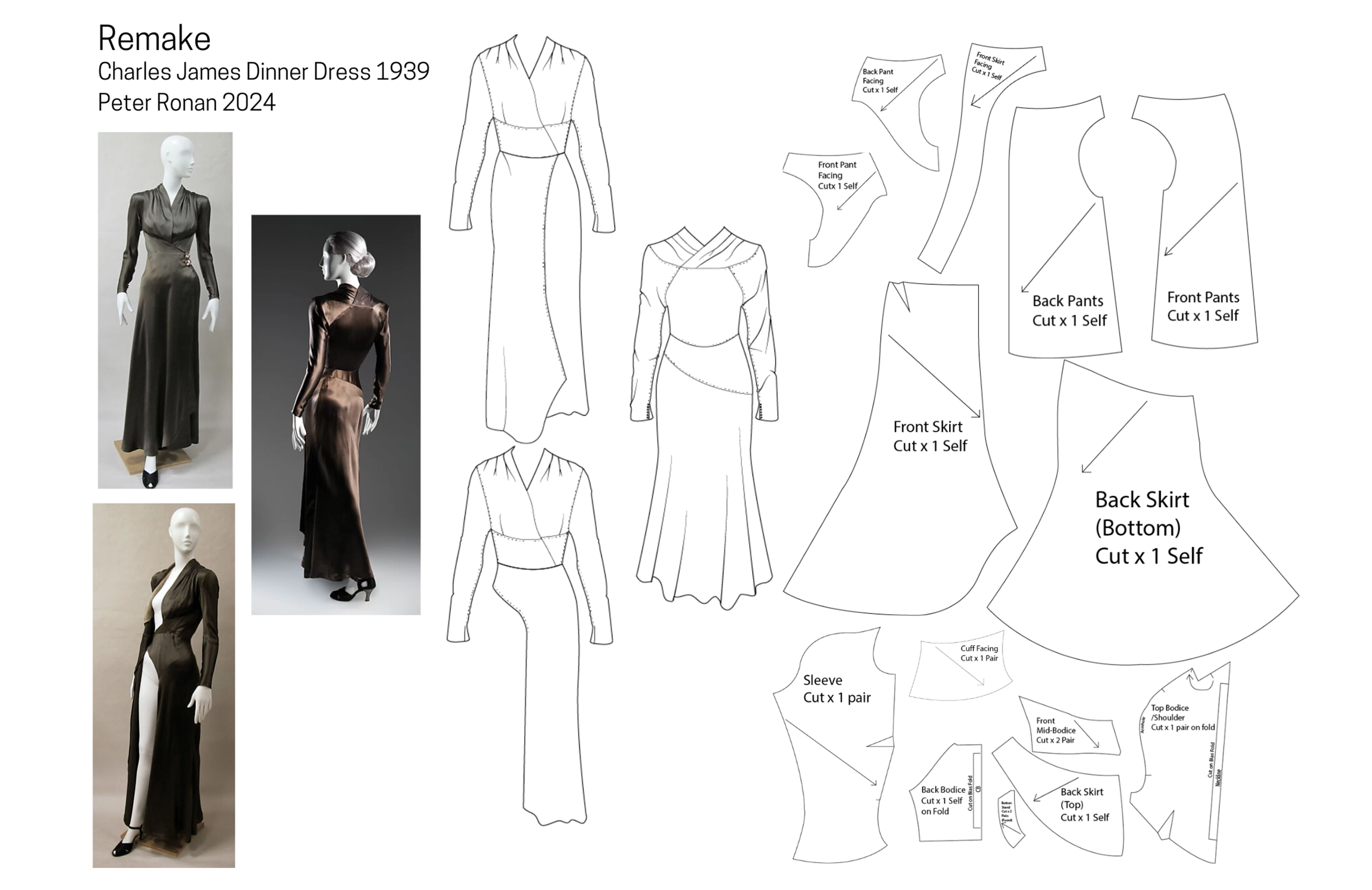
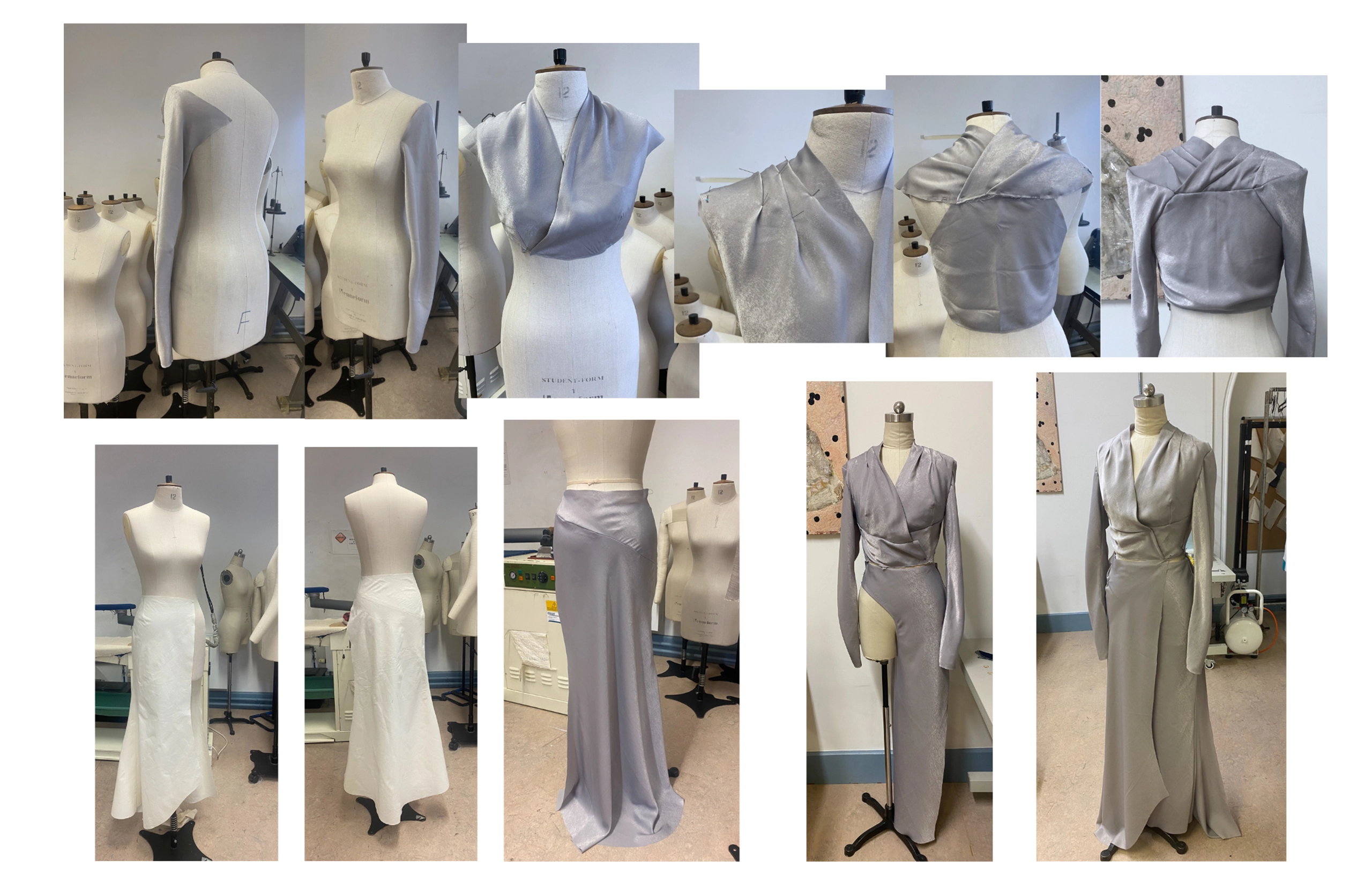
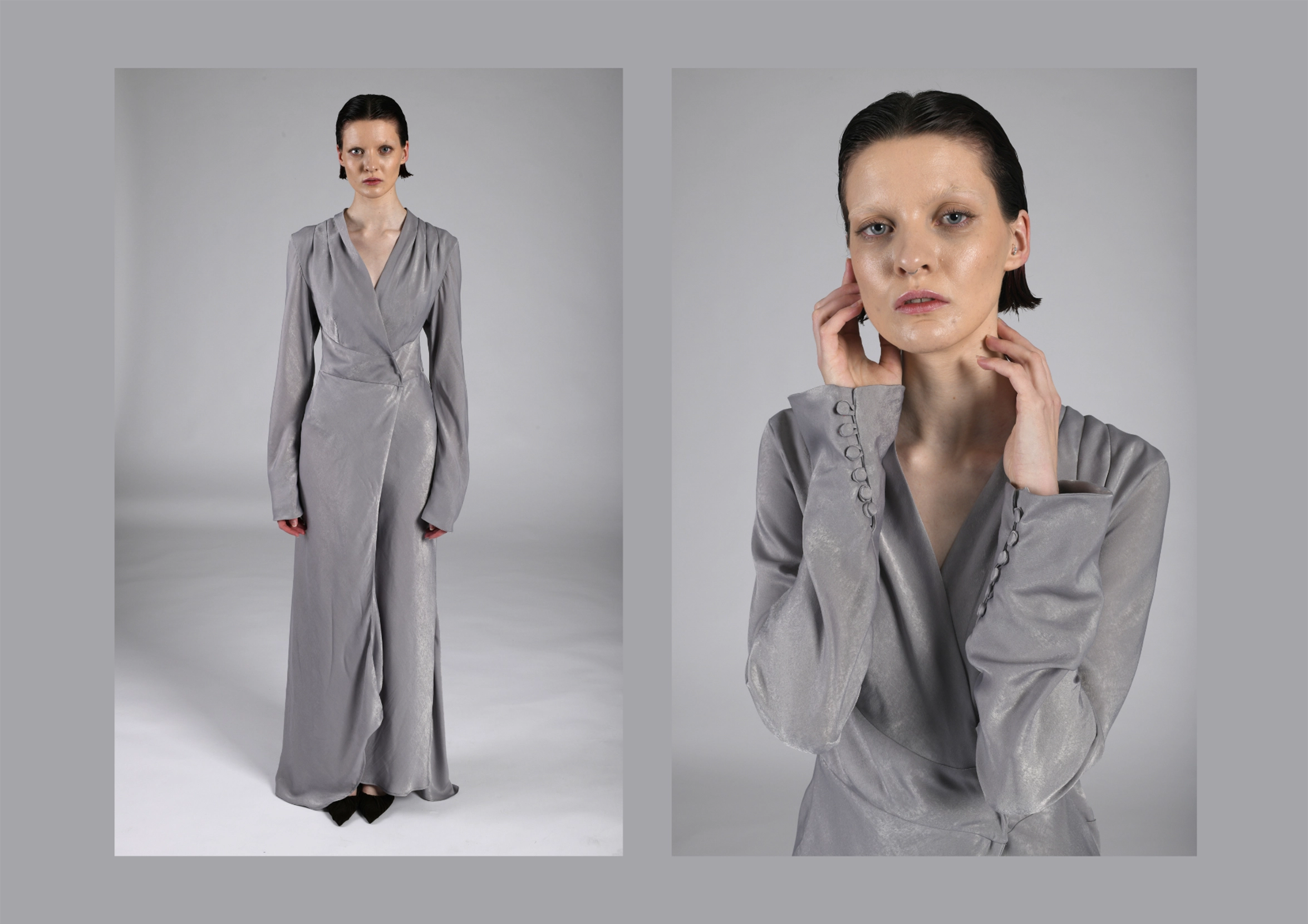
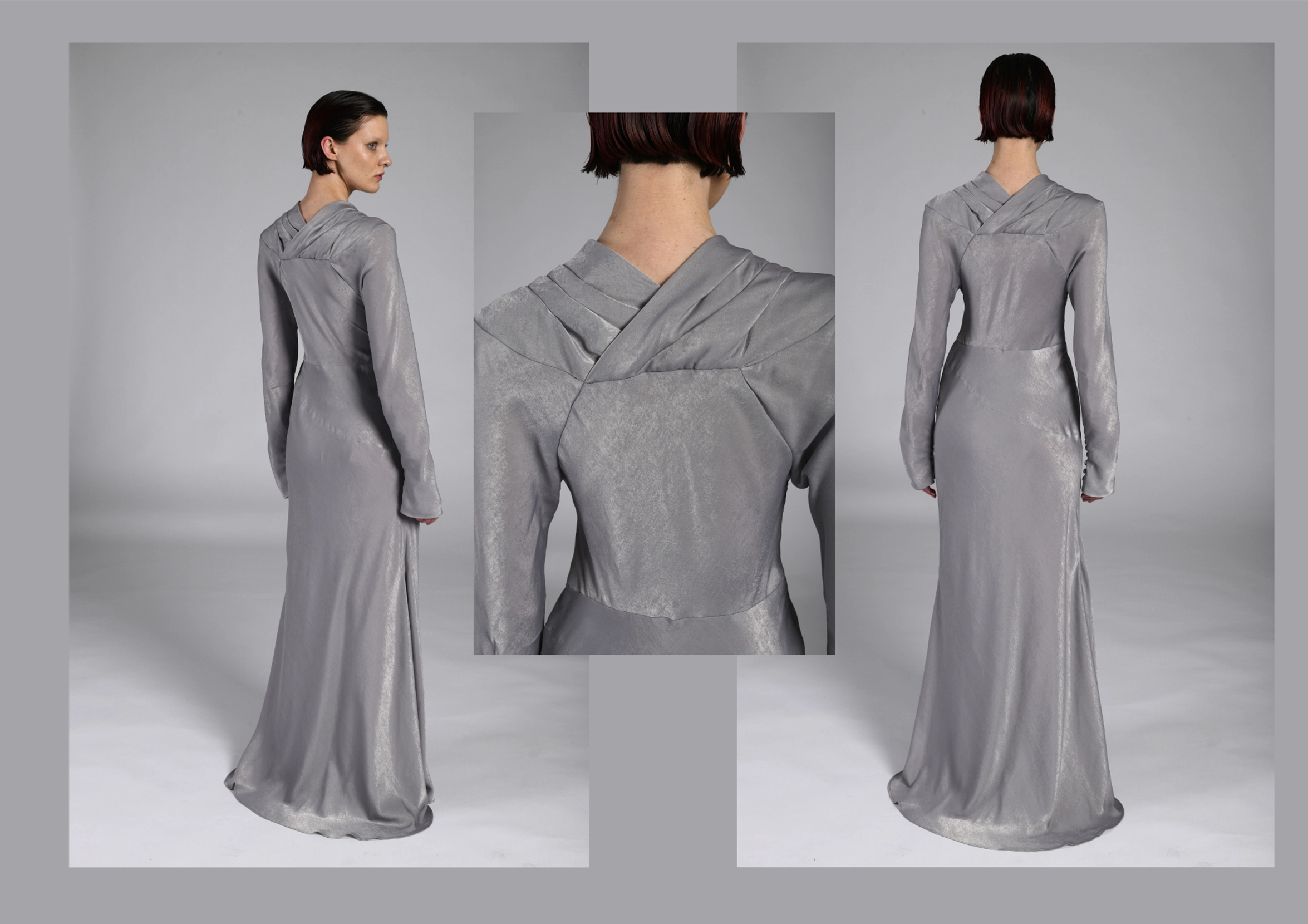
Remake Charles James Dinner Dress (1939)
The Remake project is a pattern-drafting project involving recreating and reinterpreting a garment of our choosing from a well-known designer. I chose the 1939 ‘Dinner Dress’ by American designer Charles James. I was drawn to this dress for its complex wrapping pattern pieces that are disclosed by an elegant bodice and skirt. This garment required heavy focus on stand work, draping the satin fabric, pinning, marking, cutting and then transferring to paper patterns.

